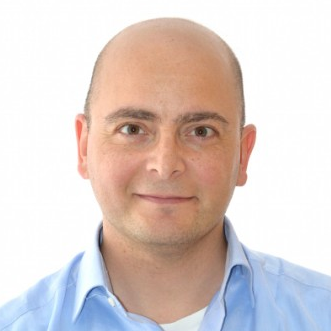Computational Acoustic Scene Analysis
A special issue of Applied Sciences (ISSN 2076-3417). This special issue belongs to the section "Acoustics and Vibrations".
Deadline for manuscript submissions: closed (15 June 2018) | Viewed by 11605
Special Issue Editors
Interests: digital signal processing; audio and music signal processing; robustness in ASR; audio and speech corpora; microphone arrays for speech recognition and acoustic scene analysis
Interests: computational intelligence and digital signal processing, with special focus on speech/audio/music processing and energy management
Special Issues, Collections and Topics in MDPI journals
Special Issue Information
Dear Colleagues,
Computational acoustic scene analysis is a highly-active research field where audio signal processing and machine learning meet several scientific topics, such as room acoustics, microphone arrays, sound source localization, source separation, acoustic event detection, pattern classification, and many others. Emerging application fields include surveillance, environmental monitoring, hearing-aids, distant-speech interaction, for example in smart-home and industry automation. In most of these cases, state-of-the-art techniques are still inadequate for a deployment in real-world contexts.
Indeed, very challenging research problems need to be solved, since real-world noisy and reverberant environments are typically characterized by the presence of multiple speakers and noise sources, often overlapping each other. With the recent advent of machine learning, a significant transformation is under way in these fields, as witnessed by many papers presented in recent conferences, workshops, and even challenges such as DCASE, ACE, REVERB and CHIME.
In this Special Issue, we aim to describe current advances on computational methods on acoustic scene analysis in the following topics, but not limited to them:
Acoustic event detection and classification
Acoustic scene classification
Environmental monitoring by means of audio signals
Sound source localization and tracking
Sound source and speech activity detection
Blind source separation
Acoustic scene understanding
Preference will be given to works describing advanced digital signal processing and machine learning techniques applied to challenging contexts, such as multiple sources, often overlapping each other, under real-world noisy and reverberant environments.
Dr. Maurizio Omologo
Prof. Dr. Stefano Squartini
Prof. Dr. Tuomas Virtanen
Guest Editors
Manuscript Submission Information
Manuscripts should be submitted online at www.mdpi.com by registering and logging in to this website. Once you are registered, click here to go to the submission form. Manuscripts can be submitted until the deadline. All submissions that pass pre-check are peer-reviewed. Accepted papers will be published continuously in the journal (as soon as accepted) and will be listed together on the special issue website. Research articles, review articles as well as short communications are invited. For planned papers, a title and short abstract (about 100 words) can be sent to the Editorial Office for announcement on this website.
Submitted manuscripts should not have been published previously, nor be under consideration for publication elsewhere (except conference proceedings papers). All manuscripts are thoroughly refereed through a single-blind peer-review process. A guide for authors and other relevant information for submission of manuscripts is available on the Instructions for Authors page. Applied Sciences is an international peer-reviewed open access semimonthly journal published by MDPI.
Please visit the Instructions for Authors page before submitting a manuscript. The Article Processing Charge (APC) for publication in this open access journal is 2400 CHF (Swiss Francs). Submitted papers should be well formatted and use good English. Authors may use MDPI's English editing service prior to publication or during author revisions.







